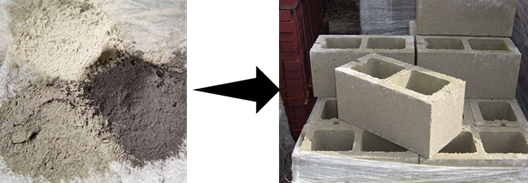Point Source Capture Home | Capture from Power Generation Sources | Capture from Industrial Sources | Emissions Control Home
Coal Combustion Residuals
Coal combustion residuals (CCRs) consist of solid byproducts from coal-based power plants, such as fly ash, bottom ash, boiler slag, and flue gas desulfurization (FGD) solids (e.g., synthetic gypsum). These are derived primarily from incombustible mineral matter in coal that drops out in the combustion zone (bottom ash and boiler slag) or is captured downstream in the plant’s particulate control equipment (fly ash), such as electrostatic precipitators and fabric filters/baghouses. Fly ash can include unburned carbon and sorbents such as activated carbon used to capture mercury, as well as additives such as limestone used to capture gaseous components like sulfur dioxide. Therefore, CCRs contain a wide range and concentration of inorganic constituents based on coal type and combustion/pollution control processes..

The combustion of coal to generate power is the single largest source of CCRs. These materials are either disposed of at the power plant or at a CCR disposal site, orsite or are recycled for beneficial use. CCRs can be used in a variety of manufacturing, construction, and other useful applications because of their specific chemical or physical properties, their availability and proximity to markets, and their cost advantages over virgin materials.
The American Coal Ash Association estimated the total amount of CCRs produced in the United States in 2019 was about 79 million tons. Of this, approximately 52% (41 million tons) was used in beneficial applications such as concrete and cement products, structural fill, road base, wallboard, agricultural amendments, and mining.1 However, that left approximately 48% (nearly 38 million tons) of CCRs not used beneficially that year, requiring these materials to be placed in landfills and impoundments.
Impoundments
In 2015, the United States had more than 310 active CCR landfills, each with an average size of more than 120 acres and an average depth of 40 feet. Additionally, there were 735 active CCR surface impoundments, having an average area of more than 50 acres and an average depth of 20 feet. Because CCRs can contain constituents such as arsenic, mercury, selenium, boron, and cadmium, these impoundments must be constructed and managed in a manner to prevent potential environmental impacts from leakage or failure. For electric utilities, the need to landfill CCRs presents a cost and operational burden, in addition to creating an environmental legacy for future generations that must be managed into perpetuity.
Regulations and Opportunities
In the United States, the Disposal of Coal Combustion Residuals from Electric Utilities U.S. Environmental Protection Agency (EPA) rule finalized national regulations to provide a comprehensive set of requirements for the safe disposal of CCRs. Along with supporting the responsible recycling of coal ash, the EPA CCR rule mandates the safe disposal of CCRs in both active and inactive (i.e., legacy) impoundments. The regulation addresses the risks from coal ash disposal—leaking of contaminants into groundwater, release of contaminants into the air as dust, and the failure of ash and related CCR surface impoundments.2
The CCR rule has presented a challenge and an opportunity to coal-based electricity-generating units to both increase the beneficial use of the fly ash and other byproducts they produce and to find ways to recycle or otherwise safely manage the materials in existing CCR impoundments and disposal sites. Developing technologies that can responsibly divert CCR toward beneficial reuse and improve the operation and management of existing CCR impoundments would strongly serve the national interest and provide positive economic and public health and environmental impacts.
1. Ref. 2019 Coal Combustion Product (CCP) Production and Use Survey Report, American Coal Ash Association
2. Ref. Disposal of Coal Combustion Residuals from Electric Utilities Rulemakings.




